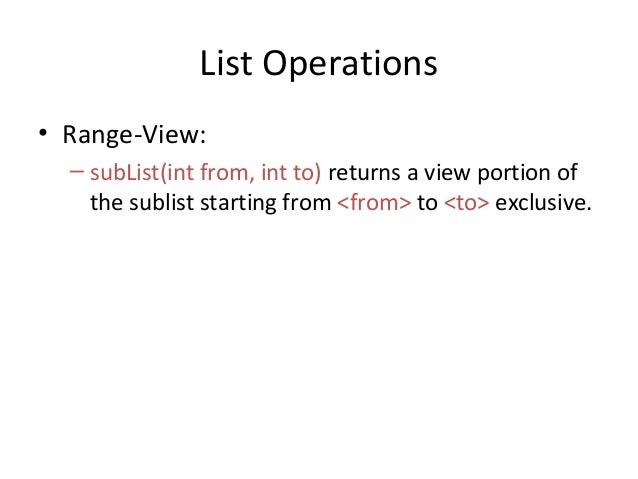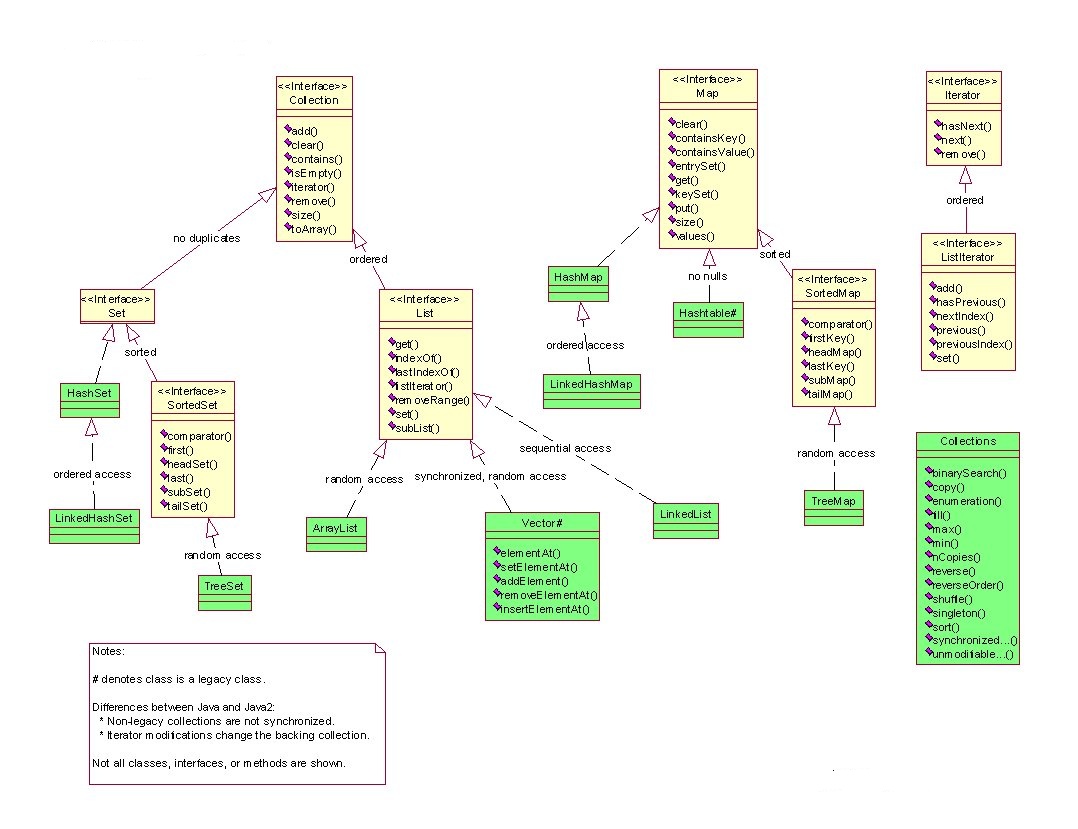

A collection represents a group of objects known as its elements. This is the root of the collection hierarchy. If an unsupported operation is invoked, a collection implementation throws an UnsupportedOperationException. To keep the number of core collection interfaces manageable, the Java platform doesn’t provide separate interfaces for each variant of each collection type. It helps in reducing run-time errors by type-checking the Objects at compile-time. The syntax is for Generics and when we declare Collection, we should use it to specify the type of Object it can contain.

Note that all the core collection interfaces are generic for example public interface Collection. Java collection interfaces are the foundation of the Java Collections Framework.

AlgorithmsĪlgorithms are useful methods to provide some common functionalities such as searching, sorting and shuffling. These classes are in package.Īll the collection classes are present in java.util and package. Some of them are CopyOnWriteArrayList, ConcurrentHashMap, CopyOnWriteArraySet.

Java 1.5 came up with thread-safe collection classes that allowed us to modify Collections while iterating over them. These classes solve most of our programming needs but if we need some special collection class, we can extend them to create our custom collection class. Some important collection classes are ArrayList, LinkedList, HashMap, TreeMap, HashSet, and TreeSet. We can use them to create different types of collections in the Java program. Java Collections framework provides implementation classes for core collection interfaces. All the collections framework interfaces are present in java.util package. The Map is the only interface that doesn’t inherit from the Collection interface but it’s part of the Collections framework. Some other important interfaces are, , and. It contains some important methods such as size(), iterator(), add(), remove(), clear() that every Collection class must implement. It is on the top of the Collections framework hierarchy. is the root interface of Collections Framework. Java Collections Framework interfaces provides the abstract data type to represent collection. Java Collections Framework consists of the following parts: 1. Java 1.2 provided Collections Framework that is the architecture to represent and manipulate Collections in java in a standard way. For example, a jar of chocolates, a list of names, etc.Ĭollections are used in every programming language and when Java arrived, it also came with few Collection classes – Vector, Stack, Hashtable, Array. What is Java Collections Framework?Ĭollections are like containers that group multiple items in a single unit. Most of the programming languages support various type of collections such as List, Set, Queue, Stack, etc. Collections are used in almost every programming language. Java Collections Framework is one of the core parts of the Java programming language.


 0 kommentar(er)
0 kommentar(er)
